Today, we had a fantastic opportunity to talk to the developers behind RESEARCH and DESTROY – a self-described “TURN-BASED ACTION” game. Not the most common combination – but you can read the great answers below and see for yourself what it’s all about. First, however, an introduction.
“Whoever fights monsters should see to it that in the process he does not become a monster.”
‒ Friedrich Nietzsche.
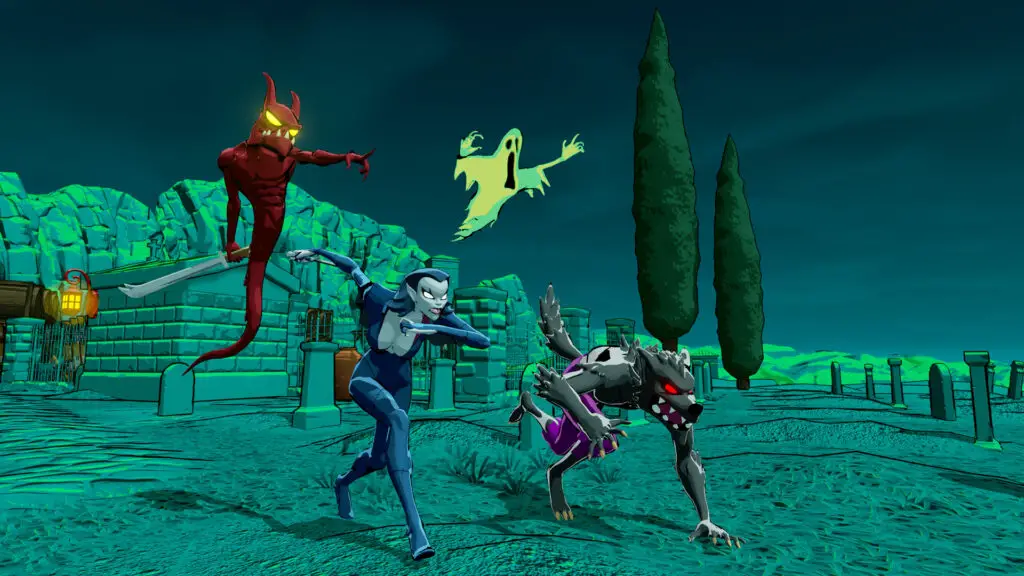
No place is safe anymore.
They are like Bermuda grass, as my old friend said – even before the real invasion began. You can’t stop them. There are too many. So, that’s why I decided to lock myself inside my old, big house. Nobody dares to enter this place. Well, at least until now. But as I said, “no place is safe anymore“.
I can hear them just outside the house. The footsteps in the courtyard sound like a marching army. They don’t care about the noise – they have no need to be stealthy. They are a multitude and nobody is going to stop them.
It’s almost dark outside. Yet, from the window, I can still discern their gloomy silhouettes. They are moving slowly among the same trees where my children used to play. Nobody is here with me, in this desperate moment. Not anymore. I’m all alone, and the only thing I can do is hide. Still, I know that this is just a matter of time.
They’ll catch me with their long limbs and then, without any remorse – they will kill me.
I can already hear the doorway creak. Then, all of a sudden, that buzzing and terrifying sound in the background. I can’t see them from here, but I know what they look like. These nightmarish creatures that walk like spiders with just two legs; with dreadful eyes full of hate, and with those long and sticky hair above what we can barely call a head.
Oh, no! I don’t know how, but they’ve found me! They are coming in my direction – like sharks, smelling blood. I hear them whispering; words I cannot understand, but that can make my blood run cold.
I know they are determined to kill me. Yet, I won’t fall without a fight.
I hate you, damned… humans!
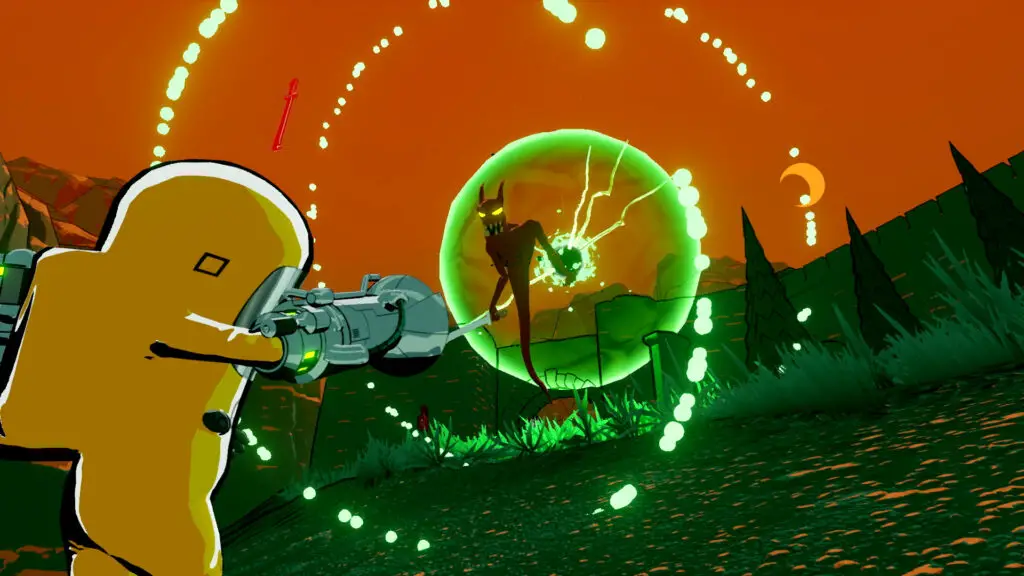
1st Turn) So, let’s start with the first and, maybe, most important question: are human beings so awful, or is it just a matter of “ignorance”?
CW*: In our fictional world they are all awful, even the Scientists. Luckily for them, their ignorance extends into a lack of self-awareness as well.
2nd Turn) Your game has an amazing art style. Although it uses stylized graphics, it still maintains a good personality and character. Personally, I found in it references to the 70s-80s pop-culture with a lysergic flavor. So, my question is: what influenced your art direction the most?
KG**: Thank you.
After we’d created our first rough prototype, we sat down and brainstormed for a fitting setting of the game. We all liked the science and research aspects of XCOM a lot and wanted that to be an integral part of the game. Someone mentioned “Ghostbusters” and from there on things fell quickly into place.
Personally, I’d always wanted to create a cel-shaded/cartoony game – and for this game it would also be more practical: we knew early on this was going to be a quite large game, but our team was very small, so I needed to come up with an efficient art style to create the large world. By “painting” the maps in striking duo-tone colours (influenced by mid 20th century cartoons), each map ends up looking very unique, and it somewhat hides the fact we’re reusing a lot of assets.
The very first characters I designed already had a strong Scooby-Doo/Hanna-Barbera influence, and we also needed a vehicle to get our heroes in and out of the missions. A lot of cartoon and TV heroes from the 70s and 80s had really cool cars (which sometimes could talk), and so our team of heroes were given the sentient flying RADvan.
The cartoon style/setting also allowed us to really get inventive and crazy with the weapons and gadgets. For example the Riftinator is a weapon that lets you drop grand pianos and other things on enemies, and the Rocket Booster Launcher lets you launch enemies into the air. In the levels you’ll find awnings and boxes with blue tarps from which you can bounce to reach greater heights. Of course, in a realistic world, these wouldn’t be things you could bounce from, but in a cartoon setting they are easily understood by players.
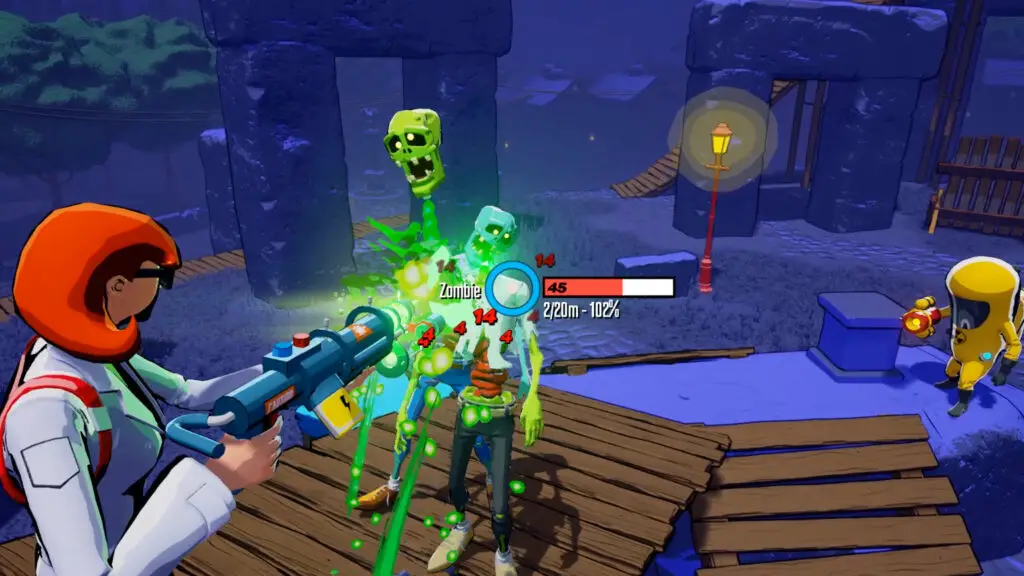
3rd Turn) Your game is labelled as a “Turn-based ACTION game”. Are you aware that this is a great blasphemy ?????
DM***: We are great believers in the importance of blasphemy and iconoclasm. If no one tried to kick at established ideas, we would never have anything even remotely “new.” After all, someone originally decided to take the ideas of “turns”–an important concept in traditional games where you are playing with other people in real life and can’t always just be talking over each other and moving the same pieces at the same time–and decided to apply them to video games where no such limits existed! We all owe a lot to this “original sin.”
KG: We are well aware of the fact that it’s unusual to mix Turn-Based and Action, but to us that’s what made it interesting. After we’d developed the core game mechanics, we recognized that there were similarities to Valkyria Chronicles, but after taking a closer look at that game we realised RESEARCH and DESTROY was more action based, and perhaps a bit more innovative. We realised that nobody else would be making a game quite like this anytime soon, so this also motivated us to keep working on it.

4th Turn) As we just said, your game can be safely included among the turn-based games, but with a twist. Here we have neither the classic APs system, nor the chance to think as much as we want to our best moves. The combat system is rather original, it blends turn-based and real time mechanics, managing to greatly increase the pace of the game. Can you explain in detail how it works?
DM: The original elevator pitch for the project would have been “XCOM with lots of verticality and co-op play.” As we worked on our first prototype map we realised quickly that grid (or hex) based movement didn’t really work well for the kind of organic maps we had in mind, so we started with a simple point-and-click approach. It worked reasonably well–click to send a trooper here, click on target to shoot, etc–but hit a few frustrating obstacles early on. First: Since it was 4p co-op at the time, we didn’t want players to have to wait for each other to take their turns. Player, player, player, player, enemy.
The pacing was terrible. Second: characters would bump into each other a lot when playing co-op. Imagine four players simultaneously telling their characters where to go in a constrained space. They’d bump into each other, or try pathing around each other, and end up running out of movement points and not reach their destinations. It was funny at first, but soon got annoying. Third: due to the lack of grid, the game now looked more like a “frozen” action game than a traditional turn-based tactics, and some weird elements of those that we’d long ago learned to live with suddenly seemed worse. You know how in XCOM you can run right up to an enemy, select attack with your shotgun, get an animation where the barrel CLIPS INTO THE ENEMY’S HEAD and STILL MISS? That. (95% hit chance?!).
And so we just took out the gameplay middlemen. Giving players direct control meant they wouldn’t bump into each other anymore (unless they really wanted to), and there was no more randomness* to the attacks: if you line your shot up with the enemy’s head, you WILL hit. The question is how much time you’re willing to spend going for the head, when maybe two easy body shots would be enough.
(*when you shoulder your weapon, your aim is nudged off a small random amount. This is to prevent players from just centering their shots in free-look and then snap-shooting. In the end though, the shots are skill based)
KG: We realised that concepts such as “movement points” and “action points” are just abstractions of time, and so each unit is given 8 seconds of “action time” during the player turn. The player can choose how to spend that 8 seconds how they like, and is only spent when the unit is actively doing something. So the player can take control of a unit, make it run-and-gun towards an objective while shooting some ghosts for 5 seconds, then switch to another unit to do something else, and then again take control of the unit with 3 seconds remaining. At any point during the player turn, the player can stop the action and take their time to consider their next move.
A very common complaint about turn-based strategy games is the length of the enemy turns, and this is something we wanted to avoid. So in RESEARCH and DESTROY, we let all the enemies move simultaneously for about 5 seconds, and then quickly play out their attacks, highlighting them on each of the three player units. The enemy turn is over in a matter of seconds, allowing the players to get back into the action.
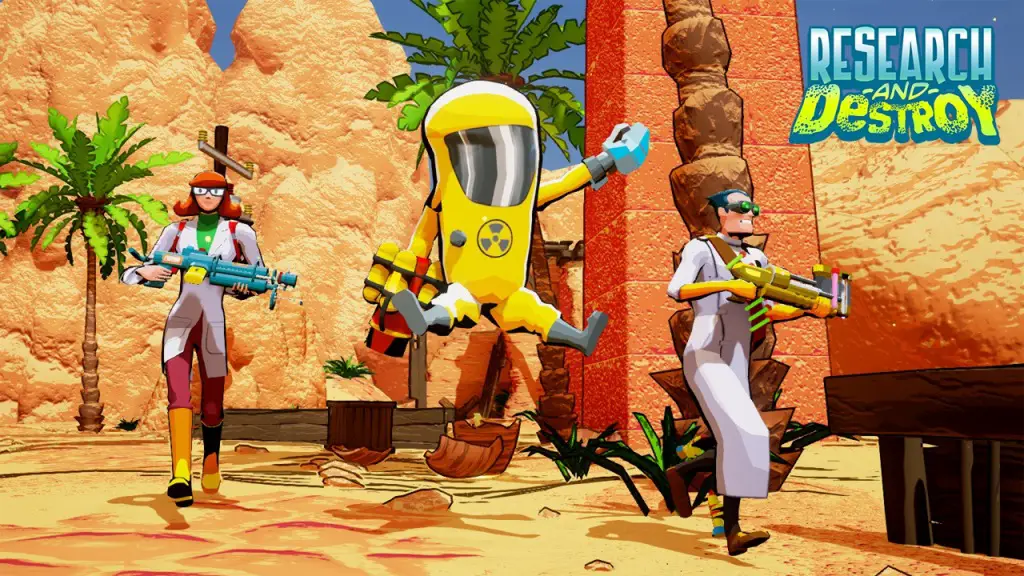
5th Turn) You are an independent and small team, but nonetheless you have already achieved a great goal: the release of your first game! Now tell me, how difficult was it to turn a passion into a viable business? Do you have any advice for people who are struggling, right now, to finish their own indie game?
CW: It was hard. But we prevailed. But seriously it was hard. Maintaining passion doesn’t automatically come easy, you have to keep looking ahead and keep your eye on your goal. There’s one driving variable that makes everything else possible, money. I think maintaining passion is easier in some ways if that variable is balanced. Enough money to make what you want without having too much so that the limitations that make creativity possible are removed. In terms of the mechanics of translating passion into viable business, I think that just naturally comes with experience. Between the three of us we have 50 or 60 years of video games development experience so that makes it easier.
For those struggling to finish their own indie title my advice would be: set yourself attainable goals, and then be tenacious but flexible. Don’t be afraid to ask for help or advice.

6th Turn) As suggested by the title, “RESEARCH and DESTROY” is a game essentially divided into two main parts. One is the “combat section” we already talked about, while the other one comes in between missions, where you can use the “$cience” currency already gained to build structures, develop new weapons and so on. So my question is: why did you decide to add this strategy section to the well-oiled action part? Aren’t you worried that this design choice could slow down the general pace of the game?
DM: The battles in turn-based games –be they XCOM-ey tactics games, RPGs, or turn-based action games– tend to be very focused and tense. It would be exhausting to have a game that was nothing but that. We also needed something to act as a “level select”, as well as a hub for organising what equipment the player has available and their progress towards the “end” of the game. It had to be active, but not use up too much time.
In the case of RESEARCH and DESTROY, the biggest challenge in the design of the campaign section was the need to make it playable by both players at the same time. We didn’t want one player to have to wait around while the “main” player did all the campaign stuff, so we developed a system that could give players reasons to choose certain missions over others as well as a sense of progression, while still keeping everyone at least somewhat active.
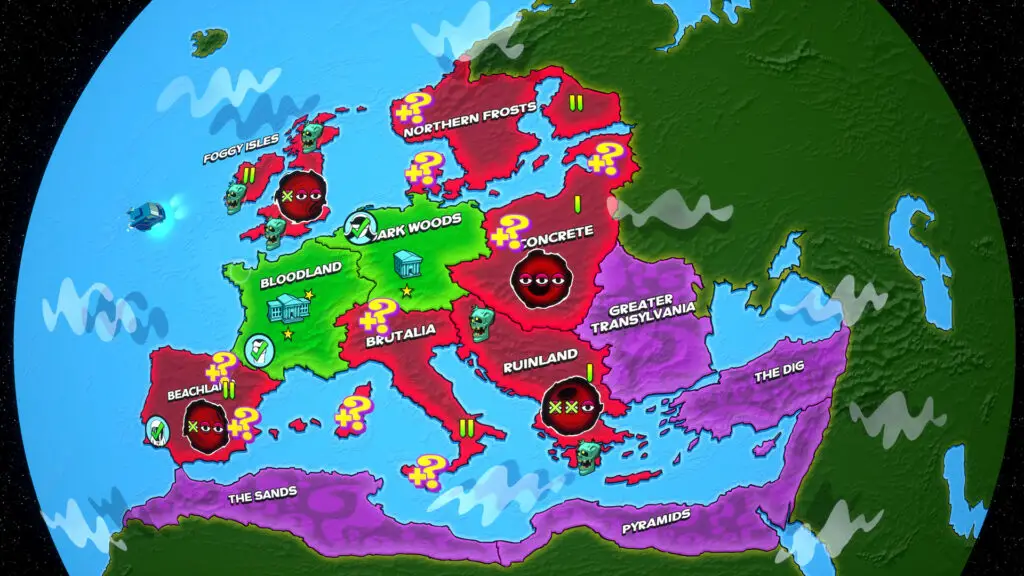
7th Turn) Still talking about the strategy section, can you explain in detail what we can do through the so-called “Universities”?
CW: Universities are a lynch pin of your campaign. From there you can research all the enemies you encounter, making them easier to fight. You can upgrade existing weapons as well as develop new ones. You can also augment your tactical arsenal by crafting gadgets there. You can’t actually finish the game without building and upgrading Universities so they are pretty essential.
Upgrading them allows you to do more advanced research which is necessary for finishing the game. But aside from all that they act as a buffer for your conquered territories against incoming Supernatural attacks. The more you’ve upgraded your University, the less likely you are to be attacked there in the first place. But perhaps most importantly, by creating and upgrading weapons and gadgets at Universities for use in missions we keep the gameplay fresh.
DM: Confident in your aim? Upgrading the Laserizer’s sniper mode allows you to more easily headshot zombies and make the most of your skills. Having trouble with the endless swarms of ghosts? The HBFG has a few upgrades that will help reduce the numbers of weaker enemies. Not sure which upgrades or weapons are right for you? You can test anything out before committing to it in the test room in the University. We tried to cater to different potential playstyles with all the different weapons, gadgets, and upgrades, and it’s through the universities that you test and acquire them.
KG: There are a lot of strategies and tricks hidden in the combination of weapons, gadgets, upgrades and situations we create. There’s a lot to learn and discover, and RESEARCH and DESTROY was also designed to be enjoyed more than once. Each campaign is unique by randomising several parameters (such as the starting point, enemy strongholds and the tech tree), and by giving this great variety in equipment players have the opportunity to play the next campaign in a totally different way, and continue to discover those deeper strategies and tricks.
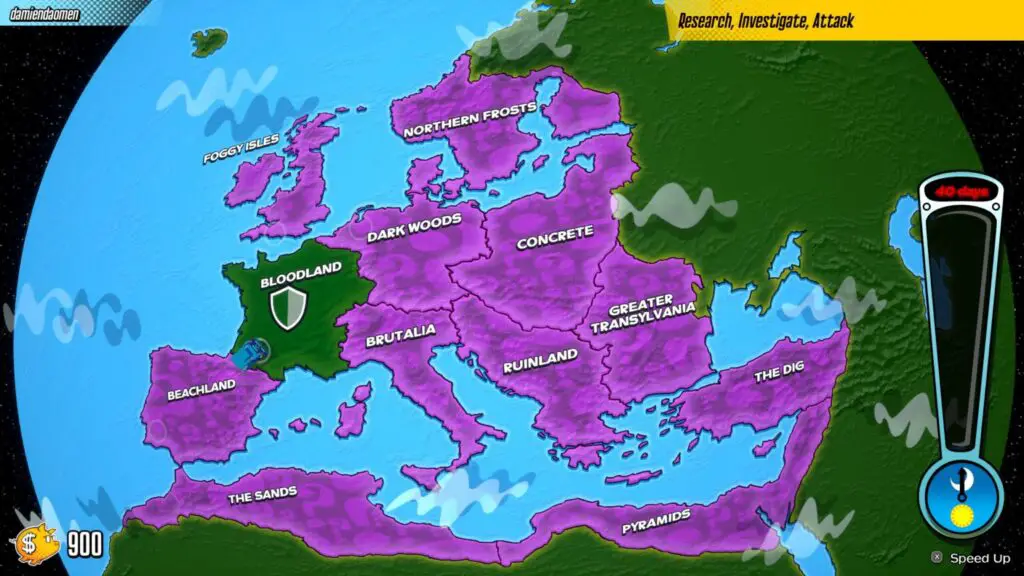
8th Turn) RESEARCH and DESTROY is a game that puts great emphasis on co-op. In this regard, what does your game do that other co-op games don’t?
CW: I’ve never really played that many turn-based games in co-op, there’s either not that many or I’ve just not been exposed to them. I think RESEARCH and DESTROY does co-op in a very accessible, immediate, and understandable way (within the framework of the game’s unusual time systems). From what I’ve seen people generally adapt to it quickly and adding friendly-fire into the mix allows the co-op experience to elevate potentially aggravating moment-to-moment failures into something hilarious. The general tone of the game aims to help with that as well.
KG: As mentioned, RESEARCH and DESTROY was actually born from the idea to create a co-op XCOM-like game, and in that regard I’d say it’s already unusual. Everything you see in the game was designed with co-op in mind. This extends all the way to the “research” part of the game where players build the universities, develop equipment and upgrades. All this can be done in co-op, too, allowing players to simultaneously browse and use the research and upgrade menus.
DM: I think it’s one of the few co-op games in which you can play co-op by yourself. If you’re really having trouble with a mission, plug in another controller and bring in another squad. The enemies will become mildly tougher and objectives slightly harder, but it might give you an edge. At the very least they can make for good decoys!
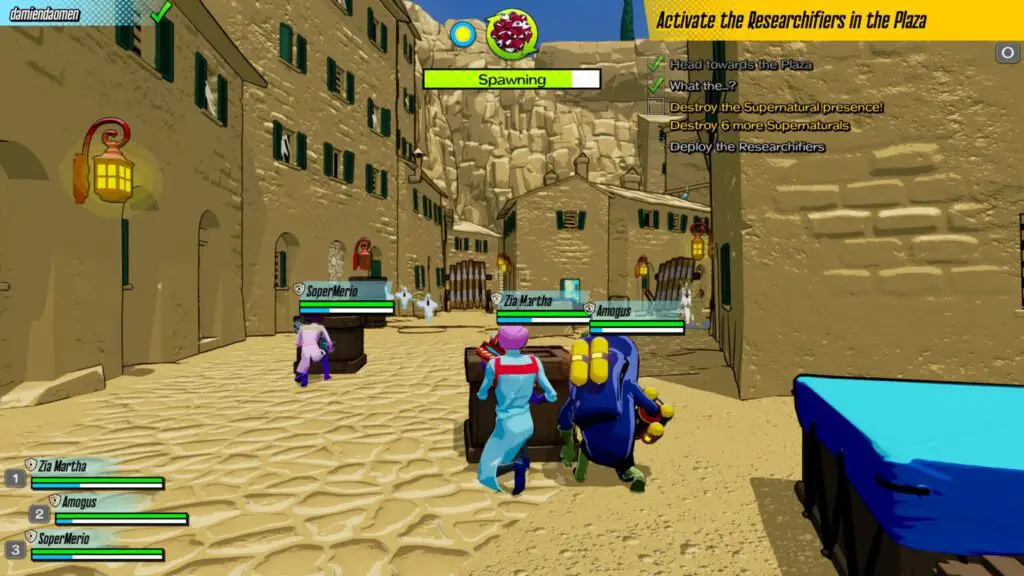
9th Turn) Your game is on PC Game Pass. How do you think this service can help the success of your game and what do you think can be the future of services like this one?
CW: Getting a Game Pass deal has been a huge win for us.
So far more players are experiencing the game pass version than any other version and most online chatter so far seems to be coming from the Game Pass version. The cloud option from Game Pass is a game-changer in my opinion so I wouldn’t be surprised to see things shift more towards mobile or simplified set top hardware (or even no hardware) completely in the future.
Hopefully it’ll help increase sales on other platforms by boosting visibility and maybe lengthen the tail for sales as well, time will tell though.
10th Turn) What can we expect for the future? I mean, are you already thinking about updates with new features or a real DLC?
CW: I think that really depends on sales but even so I think that’s further down the road than most players would want. If it becomes wildly successful we would consider RESEARCH and DESTROY PART DEUX or some sort of campaign expansion, but right now we’re looking to the future and deciding what to do next. In the meantime we’re listening to players and making minor changes, doing bug fixes and things like that for a future patch, and boning up on UE5.
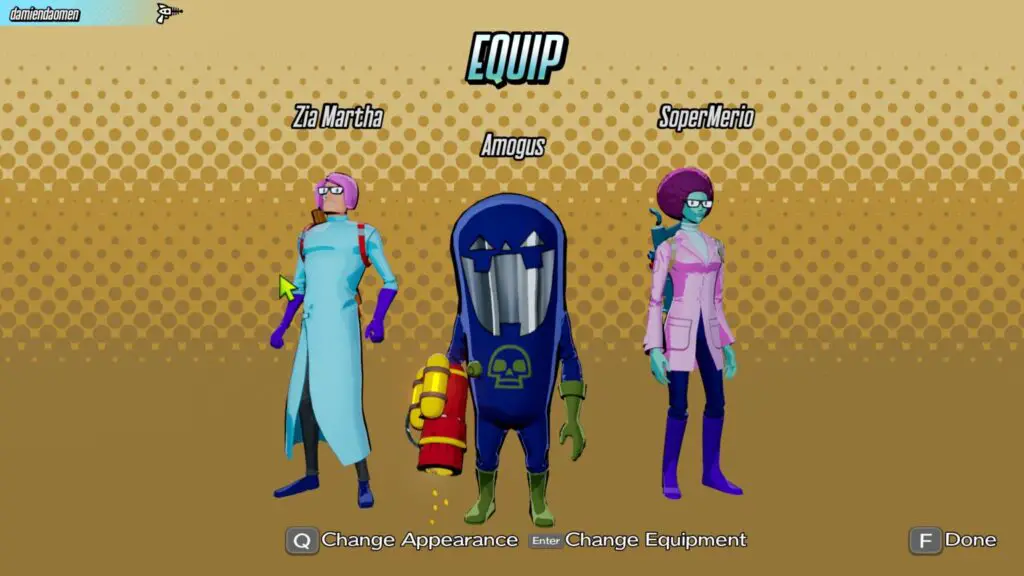
Bonus Turn) Before leaving you, just a bonus question. Which is the latest turn-based game you’ve played or still playing?
CW: Most recently I did a couple of campaigns in Phoenix Point (I was a backer) which is just an immense game and previous to that I finished Gears Tactics which was great fun and quite challenging. Thronebreaker was a great game too, considering I’m not that experienced at games like that.
DM: Speaking of blasphemy, I’ve been almost exclusively playing action games these days. I still boot up Slay the Spyre [sic] every once in a while though. That has turns. I’m still allowed to be here, right?
KG: Similar to Daniel, I find myself returning to play Monster Train regularly. It’s incredibly challenging.
*CW – Chris Willacy: Design, Level Design, Effects & Audio
**DM – Daniel Markiewicz: Design & Programming
***KG – Kees Gajentaan: Design, Character Design & Art
Thank you very much for your time, Implausible Industries. We will continue to follow your project. Good luck!
For any other information about RESEARCH and DESTROY, please consider the following links:
Official Website: https://rad-official.com/
Store Page: https://store.steampowered.com/app/1279310/RESEARCH_and_DESTROY/









